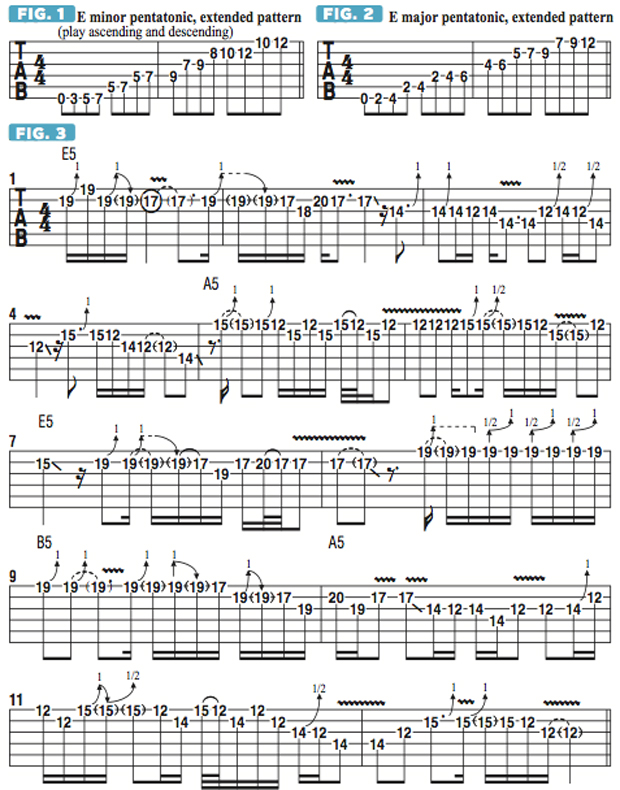Learn the hallmarks of the hugely influential guitar style of Mountain's Leslie West
Take a look at Leslie West's heavy, dense guitar work in this lesson

Though rarely mentioned in the pantheon of great rock guitarists, Mountain’s Leslie West is unquestionably one of the most influential and original players to emerge from the burgeoning late-Sixties rock scene.
West, a native New Yorker, first gained national exposure at the age of 21 via his scorching cover of Otis Redding’s Respect, released in 1966 while a member of the Vagrants.
The band’s producer, Felix Pappalardi, began producing Cream in 1967 (starting with Disraeli Gears) and in 1969 joined forces with West on the guitarist’s breakthrough solo debut, Mountain, which includes the seminal classics, Blood of the Sun, Long Red, Baby I’m Down and the immortal masterpiece, Dreams of Milk and Honey.
Their alliance soon adopted the moniker Mountain as the group’s name, and the classic lineup of West, Pappalardi on bass, drummer Corky Laing and keyboardist Steve Knight were described by Rolling Stone as “a louder version of Cream.” The group’s fourth show ever was in front of 400,000 people at Woodstock on August 16, 1969. The band achieved worldwide success on the release of their breakthrough smash single, Mississippi Queen, in March 1970.
Leslie’s signature soloing style is characterized by smooth, melodic phrasing, an exquisitely slow, wide vibrato and a dense, heavy guitar tone. Eddie Van Halen, Randy Rhoads, Warren Haynes, Joe Bonamassa and many other rock guitar gods have hailed West as a primary influence.
Like most blues and rock players, the majority of his improvisations are based on pentatonic scales, and, akin to his influences Albert, B.B. and Freddie King, as well as Eric Clapton and Jimi Hendrix, West often alternates freely between parallel minor and major pentatonic phrases in his improvised solos.
FIGURE 1 illustrates the E minor pentatonic scale (E G A B D) played in a highly useful extended pattern that begins with the open low E string and moves diagonally up and across the neck. FIGURE 2 shows E major pentatonic (E F# G# B C#) played in a similarly diagonal pattern. Be sure to memorize both shapes, and then try transposing them to different keys and areas of the fretboard.

FIGURE 3 is a 12-bar solo played in Leslie’s style. In bar 1 into the first half of bar 2, the lines are based on E major pentatonic, starting with an oblique bend on the top two strings. On beat two of bar 2, I bring a high G note into the phrase, alluding to E minor pentatonic and stick with this scale through the end of bar 6. In bars 7–9, I utilize notes from both scales, leaning a little more heavily on the E major pentatonic sound, then close out the last three bars with lines firmly based on E minor pentatonic.
When studying this solo, notice the attention paid to melodic phrasing, and strive for proper bend intonation and to produce a wide, even vocal-like vibrato, all essential elements in replicating West’s trademark guitar voice.
Get The Pick Newsletter
All the latest guitar news, interviews, lessons, reviews, deals and more, direct to your inbox!
Guitar World Associate Editor Andy Aledort is recognized worldwide for his vast contributions to guitar instruction, via his many best-selling instructional DVDs, transcription books and online lessons. Andy is a regular contributor to Guitar World and Truefire, and has toured with Dickey Betts of the Allman Brothers, as well as participating in several Jimi Hendrix Tribute Tours.
“There are so many sounds to be discovered when you get away from using a pick”: Jared James Nichols shows you how to add “snap, crackle and pop” to your playing with banjo rolls and string snaps
Don't let chord inversions bamboozle you. It's simply the case of shuffling the notes around








![Joe Bonamassa [left] wears a deep blue suit and polka-dotted shirt and plays his green refin Strat; the late Irish blues legend Rory Gallagher [right] screams and inflicts some punishment on his heavily worn number one Stratocaster.](https://cdn.mos.cms.futurecdn.net/cw28h7UBcTVfTLs7p7eiLe.jpg)


